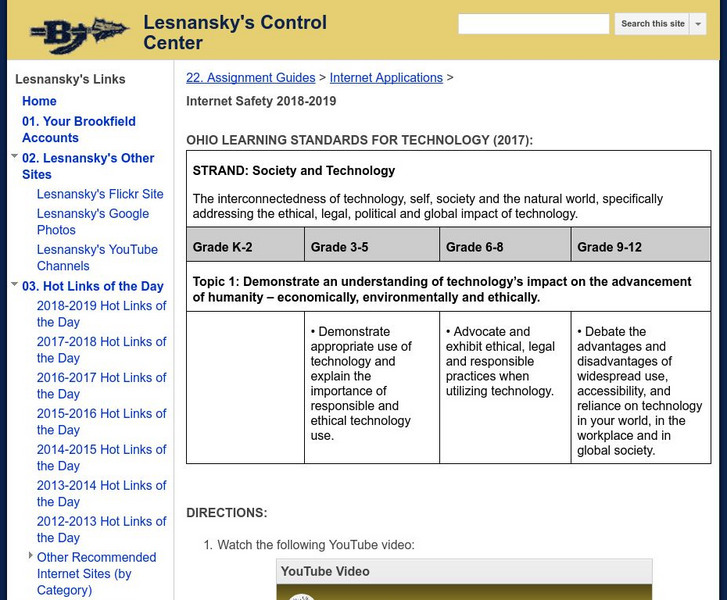Other
Wosu Public Media: Are You Digi Fit?: Choose to Be Positive With Others Online
This lesson teaches children how to behave appropriately when interacting with others online. They are guided in understanding how their words can be perceived by others online and how to deal with an online bully. Includes links to two...
Childnet
Childnet: Digiduck Stories
Engaging online safety stories for young children aged 3-7. The Digiduck collection has been created to help parents and teachers educate children aged 3 - 7 about online safety. The collection includes a ebooks, PDFs, a poster and an...
Other
Insafe: Safer Internet Centres: Communicating Respectfully [Pdf]
A 16-page textbook designed to give students in Grades 1 and 2 insights into various means of communication whilst drawing on real-life parallels of rights and responsibilities. Includes coloring pages for students and links to several...
REMC Association of Michigan
Remc Association of Michigan: 21 Things4 Students: 6. Cyber Safety
This learning module is made up of nine quests organized into sets of three. In the first set, students learn how to protect themselves online. In the second, they go through three simulations/games to learn how to protect their...
Common Sense Media
Common Sense Media: Education: Screen Out the Mean: K 2
[Free Registration/Login Required] Young scholars learn that children sometimes can act like bullies when they are online. They explore what cyberbullying means and what they can do when they encounter it. Students recognize that it is...
Other
Education World: Promoting Responsible and Ethical Digital Citizens
This article discusses ways teachers can train today's generation to be responsible and ethical life-long learners in the digital age. Topics include care of technology equipment, using reputable sites for studies and research, adhering...
Other
Brookfield High School: Lesnansky's Control Center: Internet Safety
In this activity, students watch a video on staying safe online, then create a slide presentation using Google Slides (or other software, e.g., PowerPoint) that explains the four main points stated in the video. [5:02]



